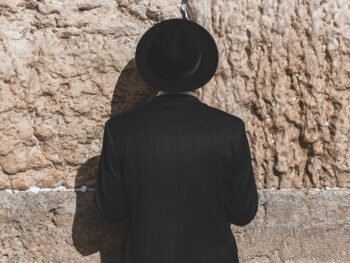Introduction
Self-defense is a crucial skill that everyone should possess. In today's world, where personal safety is not guaranteed, knowing how to protect oneself is of utmost importance. Martial arts provide a comprehensive system of self-defense techniques that can be used in real-life situations. These ancient combat practices not only teach physical techniques but also instill mental discipline and self-confidence. In this article, we will explore the basics of self-defense and the top martial arts styles that are effective for self-defense purposes.
Understanding the Basics of Self-Defense: Why Knowing a Martial Art is Important
Learning a martial art for self-defense offers numerous benefits. Firstly, it equips individuals with the necessary skills to protect themselves in dangerous situations. Martial arts teach techniques such as strikes, kicks, and grappling moves that can be used to fend off attackers. By learning these techniques, individuals gain the confidence to handle threatening situations effectively.
In addition to physical techniques, martial arts also focus on mental preparedness. Training in a martial art helps individuals develop discipline, focus, and mental strength. These qualities are essential in self-defense situations, as they enable individuals to stay calm and make quick decisions under pressure. Martial arts training also improves physical fitness, agility, and coordination, making individuals better equipped to defend themselves.
The Top Martial Arts Styles for Self-Defense: A Comprehensive Overview
There are various martial arts styles that are effective for self-defense purposes. Some of the most popular ones include karate, jiu-jitsu, taekwondo, krav maga, boxing, muay thai, and kung fu. These styles differ in their techniques, philosophies, and origins. It is important to understand the differences between striking and grappling martial arts to choose the one that suits individual preferences and needs.
Striking martial arts, such as karate, taekwondo, boxing, muay thai, and kung fu, focus on using punches, kicks, and strikes to incapacitate an opponent. These styles emphasize speed, power, and accuracy in delivering strikes. On the other hand, grappling martial arts, such as jiu-jitsu, focus on controlling an opponent through holds, locks, and submissions. These styles are effective for close-quarters combat and ground fighting.
Karate: The Traditional Japanese Martial Art for Self-Defense
Karate is a traditional Japanese martial art that originated in Okinawa. It is known for its powerful strikes and kicks. The philosophy of karate emphasizes discipline, respect, and self-control. Karate training involves practicing katas (pre-arranged sequences of movements), sparring, and conditioning exercises. Basic techniques in karate include punches, kicks, knee strikes, and elbow strikes. Karate is a well-rounded martial art that provides individuals with the skills to defend themselves in various situations.
Jiu-Jitsu: The Brazilian Martial Art for Grappling and Ground Fighting
Jiu-Jitsu is a Brazilian martial art that focuses on grappling and ground fighting techniques. It was developed from traditional Japanese jiu-jitsu and adapted for self-defense purposes. The philosophy of jiu-jitsu revolves around using leverage and technique to overcome larger and stronger opponents. Jiu-jitsu training involves learning various joint locks, chokes, and submissions. It also emphasizes positional control and escapes. Jiu-jitsu is particularly effective for self-defense situations where the fight goes to the ground.
Taekwondo: The Korean Martial Art for Kicking and Striking Techniques
Taekwondo is a Korean martial art that is known for its dynamic kicks and strikes. It is a popular martial art that is practiced worldwide. The philosophy of taekwondo emphasizes self-discipline, respect, and perseverance. Taekwondo training involves practicing forms (patterns of movements), sparring, and board breaking. Basic techniques in taekwondo include various kicks, punches, and strikes. Taekwondo is a high-energy martial art that focuses on speed, agility, and flexibility.
Krav Maga: The Israeli Martial Art for Real-Life Self-Defense Situations
Krav Maga is a modern martial art that was developed by the Israeli military. It is designed for real-life self-defense situations and focuses on practical techniques that can be used in high-stress environments. The philosophy of Krav Maga is to neutralize threats quickly and efficiently. Krav Maga training involves learning strikes, kicks, and defenses against common attacks such as grabs and chokes. It also includes training in situational awareness and de-escalation techniques. Krav Maga is a highly effective martial art for self-defense purposes.
Boxing: The Western Martial Art for Punching and Footwork Techniques
Boxing is a Western martial art that focuses on punching techniques and footwork. It is a combat sport that is practiced worldwide. The philosophy of boxing revolves around discipline, determination, and sportsmanship. Boxing training involves learning various punches, defensive techniques, and footwork drills. It also includes sparring sessions to practice the techniques in a controlled environment. Boxing is an excellent martial art for self-defense as it teaches individuals how to effectively use punches and footwork to evade and counter attacks.
Muay Thai: The Thai Martial Art for Striking and Clinching Techniques
Muay Thai is a Thai martial art that is known for its powerful strikes and clinching techniques. It is often referred to as the "art of eight limbs" as it utilizes punches, kicks, elbows, and knees. The philosophy of Muay Thai emphasizes discipline, respect, and mental toughness. Muay Thai training involves learning various strikes, clinches, and defensive techniques. It also includes conditioning exercises to develop strength and endurance. Muay Thai is a highly effective martial art for self-defense as it teaches individuals how to use all parts of their body as weapons.
Kung Fu: The Chinese Martial Art for Combining Defense and Offense Techniques
Kung Fu is a Chinese martial art that encompasses a wide range of styles and techniques. It is known for its fluid movements and combination of defense and offense techniques. The philosophy of Kung Fu emphasizes discipline, patience, and self-improvement. Kung Fu training involves learning various forms, strikes, kicks, and defensive techniques. It also includes training in meditation and breathing exercises to develop internal strength. Kung Fu is a versatile martial art that provides individuals with a well-rounded set of self-defense skills.
Choosing the Right Martial Art for Your Self-Defense Needs: Factors to Consider
When choosing a martial art for self-defense, there are several factors to consider. Firstly, it is important to assess personal preferences and goals. Some individuals may prefer striking martial arts, while others may prefer grappling martial arts. It is also important to consider the physical requirements of each martial art and whether they align with individual capabilities and limitations.
Another important factor to consider is the availability of qualified instructors and training facilities. It is crucial to find a reputable martial arts school with experienced instructors who can provide proper guidance and instruction. The training environment should also be safe and conducive to learning.
Conclusion
In conclusion, self-defense is a vital skill that everyone should possess. Learning a martial art provides individuals with the necessary techniques and mental discipline to protect themselves in dangerous situations. There are various martial arts styles that are effective for self-defense purposes, including karate, jiu-jitsu, taekwondo, krav maga, boxing, muay thai, and kung fu. Each style has its own unique techniques, philosophies, and training methods. By considering personal preferences and goals, as well as finding a qualified instructor and training environment, individuals can choose the right martial art for their self-defense needs. So, start training and empower yourself with the skills to protect yourself and others.





